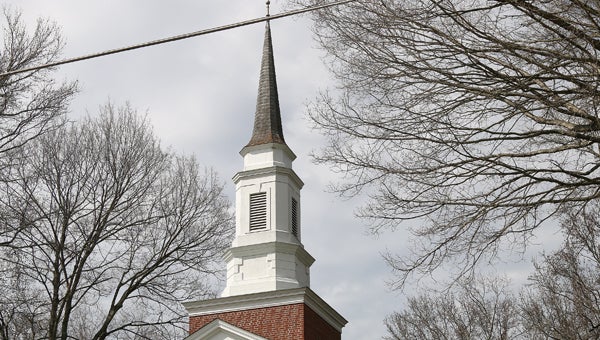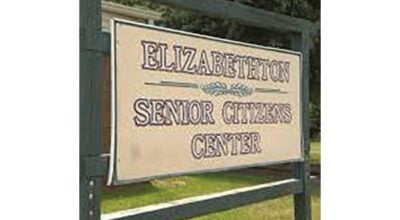Elizabethton… a skyline of steeples that point upward
Published 8:05 am Monday, March 23, 2020
Several church steeples dot the Elizabethton landscape, and in every community of Carter County — from Butler to Hampton to Roan Mountain, Stoney Creek and Milligan College — there are churches. Some are constructed of wood, some brick, and some even stone. But one thing they almost all have in common is a steeple, a cone-shaped spire, scraping the sky and often sporting a solitary cross or other iconic toppers.
When America was first settled, the church was typically one of the first buildings put up when settlers established in a new area. Usually, it was the largest building in the community with the possible exception of a few barns, and it often doubled as the community’s school.
And, like other communities, Elizabethton churches are some of the oldest buildings around.
If you stand on Sunset Hill above First Baptist Church in Elizabethton, most dominant are the steeples in the downtown: First Baptist Church, First United Methodist Church, and First Christian Church. The upward sweep of the spires not only draws you to the downtown and local activity, but it also draws eyes symbolically heavenward.
Research tells us that the tradition of church steeples dates back to the eighteenth century in Europe. As people immigrated to America, they brought with them church architects who began designing churches as grand cathedrals, which always had high steeples. One thought is that the vertical lines of the steeple helped to visually enhance the lines of the church, directing the viewer’s eyes toward the heavens, and to God, and thus helped keep the people in a heavenly frame of mind coming into worship.
The steeples had other functions. Many of them contained clocks, while others contained bells. In the very early days, reliable clocks were very rare and expensive. Since most of the people told the time from the sun and its shadows, it was difficult to announce when the church service would begin. Thus, the churches would ring the bells to announce the time of the meeting. For the sound of the bells to be heard, the steeple had to rise above all the other buildings in town so that the sound would not be obstructed.
When I was a young girl growing up in the Beck Mountain community, our church had a bell, and each Sunday morning right on time at 9 a.m., Ike Bill Campbell rang the bell to announce it was time to start gathering for church at Beck Mountain Baptist. For a number of years, Campbell served as janitor of the church, and most of the time he walked the mile or so from his home to church. A very humble gentleman, he took his job of ringing the bell seriously.
Also, there were times if you were outside, you could hear the sounding of the bell farther down the road at Siam Baptist.
My father, while a young man, janitored the church at Siam Baptist, which at that time was a small white clapboard building which doubled as the school. The building had a bell, which served a double function: it announced the beginning of school as well as church. He also shared that when someone died in the community, he was often summonsed to ring the bell to announce the death.
Now that we all have accurate timepieces, we don’t need church bells to tell us when to set out for church, so steeples have become more decorative.
In summary, the bells called us to worship, the steeple told us where worship was, and the verticality of the churches directed our attention upward toward God as we entered the church for worship services. Even though there are many different ideas about the origins of church steeples, today, it is still easy to sport a church from a fairly long distance. The distinct church steeple still directs our attention upward, and the end result, hopefully, will be that we are drawn to God. Indeed, the cross atop many a steeple is still drawing people to Christ.
The Elizabethton skyline is defined in part by its church steeples — those towering structures that seem to literally reach into the heavens. Some are simple, like the small cross atop the belfry at St. Thomas Episcopal Church behind the Carter County Courthouse. First Baptist Church, meanwhile, has a prominent dome as a major feature in its architecture. The steeple of First Christian reaches high into the heavens much like a large darning needle.
Regardless of their shape and size, the steeples all point to heaven and to God, and as Jesus said, “And, I, when I am lifted up from the earth, will draw all people to myself” (John 12:32). The cross atop many a steeple is still drawing people to Christ.
















